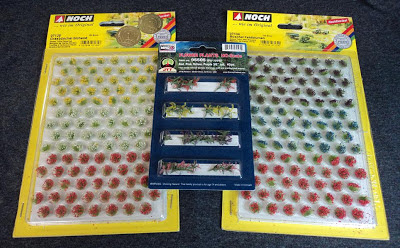"I think Lepzig is over that-a-way..."
Much like my beloved Russians, I'm a little slow to mobilize some times...
I've been playing miniatures wargames of one sort or another for a long time. Since the early 1980's in fact. Over those years I've played most historical periods and a number of Fantasy & Science Fiction ones in multiple scales. The one I keep coming back to over & over again is Napoleonics. I got my start in 15mm scale but have dabbled in 6mm/10mm and, now, 28mm scale. In most of those periods I have usually built Russian armies.
Why Russians? The main answer is simple: when I was a teenager & wanting to get into Napoleonics, another gamer was looking to offload his army and offered me a good deal. I got an instant army full of the old Heritage, Minifig, Hinchliffe & Ral Partha (old school, baby!) 15mm figures, and the rest was history.
28mm scale Napoleonics has always had a special pull for me as well. When I was getting into the hobby I went down the old Little Tin Soldier Shoppe in Minneapolis and readily traded my hard-earned paper route money in for figures, paints and wargames magazines. One of the first magazines I ever bought was Miniature Wargames #10, featuring massed columns of Napoleonic infantry advancing on a village. These were forces from Peter Gilder's Wargames Holiday Centre and featured large units of figures moving across wonderful terrain in large and swirling battles. I was hooked. Ever since then the only 'right way' to do Napoleonics in my mind was massed battalions in 28mm scale. I've worked on many projects since then, but Peter Gilder's imagery always stuck with me. Fortunately I made contact with Jason and it appears that we are well on our way to creating our own magic on the tabletop.
Napoleonics "In the Grand Manner"
I love the Russian army for a number of reasons, both good and bad. They have a number of good traits: the massed grenadiers with their tall plumes and (in the Pavlovs' case 18th-century brass mitres), the wild & colorful cossacks nipping at the edges of the battlefield causing trouble, the huge amounts of artillery available (each battery was twice the size of a regular French one, and the Russians had scads of batteries), the doggedness and toughness of the rank & file infantryman, etc.
The Russian army had a number of bad traits as well: The army-level leadership could be notoriously bad; the Russian generals were so bad even Austrian generals made fun of them sometimes. Not all Russian officers were incompetent, however, and some of them displayed a great deal of skill and courage. Political infighting was rampant, with the 'true Russian' bloc conspiring against the 'German' bloc, and there were also plenty of French émigrés to make things interesting as well. Marksmanship among the line infantry was challenging; there were enough different calibers of musket issued that supply was difficult & musketry practice was limited.

Tsar Alexander I
Finally, there's just a lot of color and character to the army. Tsar Alexander was a meddling emperor who thought he was ordained by God to rid Europe of Napoleon. His brother, the Grand Duke Constantine, was a psychopath & leader of little skill who got to lead the Guards due solely to being the emperor's brother. As mentioned before, when you look at the names of the generals in the Russian army, many of them are obviously not Russian: Barclay de Tolly, Bennigsen, Langeron, St. Priest, Prince Eugene of Wurttemburg, etc. These 'foreigners' (whether native born or not) were actively conspired against by the 'true' Russian generals even on campaign, which did nothing to add to the overall effectiveness in the field.
There's also regimental flags of almost any color imaginable, the unkempt cossacks running amok, the Russian Curassiers resplendent in their white uniforms, and a number of interesting special units like Naval Infantry, the Russo-Prussian Legion, converged grenadier battalions, etc. All in all, it's a fun army to build, and one that requires a certain amount of skill to play well. I will be very curious to see how it plays out in Black Powder.
I laid out a basic order of battle on my own blog a week or two back. Jason has ported some of that over to the Russian OOB page on this blog and I'll expand on it and fill it out sooner or later.
I'd like to thank Jason and Eric for inviting me to join their 1813 project. I think it will be a very rewarding and fun project and I can't wait to see where it goes.
.

































